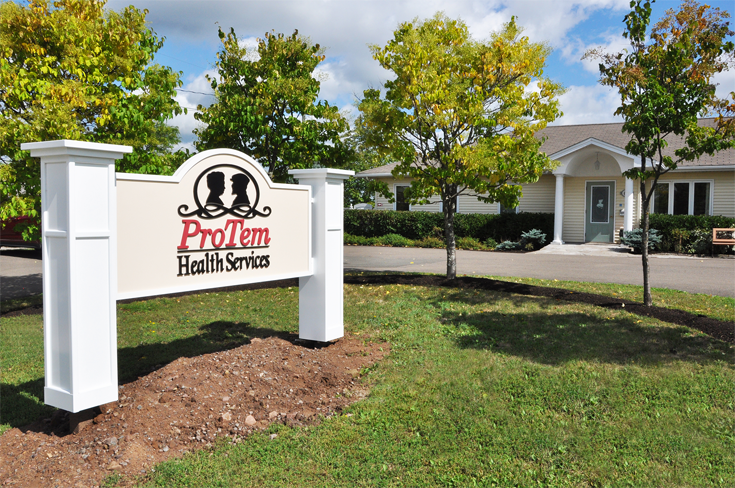About Dementia
Learn about the different types of memory diseases we specialize in at ProTem.
Dementia Lewy Bodies
Dementia with Lewy bodies (DLB) or Lewy body dementia (LBD) as it’s sometimes called, is a form of dementia characterized by deposits of a protein in the brains of those afflicted with it. Parkinson’s disease dementia is also a dementia that is caused by these same deposits.
Unfortunately, Lewy body dementia is the most misdiagnosed form of dementia, because its symptoms resemble those of Alzheimer’s and Parkinson’s. In general terms, it takes an average of 18 months and 3 doctors to finally get to the most accurate diagnosis. During this time, the individual’s disease is advancing, and he may be taking unnecessary medications with dangerous side effects.
In the past, LBD was considered a rare disease, but as neuroscientists and neurologists learn more, its diagnosis has become far more widespread.
Robin Williams, the beloved comedian and actor, was suffering from this disease when he died. His original diagnosis was Parkinson’s, and it wasn’t until the autopsy that the vast and dense presence of Lewy bodies in his brain was discovered.
What are Lewy bodies?
The “bodies,” or deposits, of protein found in the brains of people with both DLB and Parkinson’s disease dementia are named after Frederich H. Lewy, M.D. Dr. Lewy, was a neurologist who worked in Alois Alzheimer’s laboratory. He first discovered some odd deposits in post-mortem brains in 1912.
It turns out these odd deposits are actually misfolded alpha-synuclein protein deposits that build up in certain regions of the brain. A person’s behavior, movement, memory, and personality are controlled in those specific regions, so those are the things you watch deteriorate as the disease progresses.
To understand what the “misfolding” is about, we have to understand a little about proteins. Every protein consists of chains of amino acids. To fit within the crowded environment of a cell, these chains fold and take on a 3-dimensional form. Sometimes, this folding process goes awry, and when it does, it causes disease.
In some people, misfolded alpha-synuclein collects in abnormal clumps inside the neurons (brain cells). When that happens, it interferes with communication between the neurons…at the connections, called synapses. The neuron is blocked from functioning… and when the neuron can’t function, it eventually dies.
As a result, widespread damage in certain brain regions spreads…and abilities affected by those regions such as thinking, behavior, movement, and mood become impaired and continue to deteriorate.
This phenomenon is found in the brains of people who have dementia with Lewy bodies, as well as those who have Parkinson’s disease dementia.
Where in the brain are these Lewy bodies found?
Great question. To give you an idea of the brain regions most often affected by DLB, take a look at the following list, along with the abilities they impair:
- The cerebral cortex: this region controls language processing, perception, thought, and language.
- The limbic cortex: this one plays a huge role in emotions and behavior
- The hippocampus: this structure helps you form new memories
- The midbrain: which is important for movement
- The brain stem: this is important in regulating sleep and maintaining alertness, as well as body functions that sustain life.
- The olfactory pathways which are brain regions that help you recognize smells.
As you can see, this is a large portion of the brain.
How Common is DLB?
DLB affects roughly 1.5 million people in North America. Both Parkinson’s disease with dementia and dementia with Lewy bodies are deemed Lewy body dementias because Lewy bodies are present in both.
• These two diseases have some symptoms in common, but their patterns of onset are different. Once begun, their progression is different, as well as the severity of symptoms. However, as the disease progresses, the symptoms crossover and the two become very similar.
Please see the page entitled Parkinson’s Disease Dementia for more detail about Parkinson’s.
In the case of Lewy Body Dementia, the primary symptoms to appear are cognitive and psychiatric, such as delusions, hallucinations, and decline in thinking abilities that dramatically interfere with daily living. For example:
- Impaired thinking in the sense of a decline in the ability to make decisions, process information, access memory, and understand visual information
- Fluctuating attention, focus, processing of information and memory as well as alertness
- Seeing things that no one else sees, known as hallucinations
- Acting out dreams while still asleep
- Listlessness of depression, anxiety or even paranoia, agitation, and believing something that is generally accepted is not true, known as delusions
- Change in body functions such as blood pressure control, temperature regulation, and bowel and bladder control
- In addition to these symptoms, Parkinson’s type symptoms may also emerge
How is DLB (or LBD) diagnosed?
To be diagnosed with LBD, a patient must have memory and thinking problems that are significant enough to interfere with daily living. But it’s not always easy to detect those changes.
The Mini Mental Status Exam, or MMSE, is a cognitive screening test widely used by physicians, but it cannot detect early signs of dementia. Therefore, it can’t be relied upon to differentiate between LBD and other conditions.
The best way to get the full picture of Lewy bodies in someone’s brain, is to take tissue samples during an autopsy. Obviously, that approach isn’t very helpful for a living patient. But as signs emerge, physicians are gaining skill and understanding to identify the difference between PDD and DLB more and more for the sake of diagnosis and
treatment.
Neurologists agree about the need for continued research to understand why some people with widespread Lewy bodies in their brain don’t experience symptoms of
dementia, and others do…and why these diseases with the same underlying disease process can be so alike, and so different at the same time.
Everyone with DLB is different, and each one experiences their own varying degrees of these symptoms. The requirements to diagnose PDD requires a prior diagnosis of
Parkinson’s disease that has progressed to dementia, combined with symptoms similar to DLB.
So, people whose dementia is diagnosed within a year or more before Parkinson’s disease, are diagnosed with DLB. But those who are already living out a Parkinson’s
diagnosis are diagnosed PDD.
So let’s talk about symptoms:
As far as symptoms of Lewy body dementia, first and foremost, you’ll see progressive dementia such as attention deficits and struggles or lapses with what’s known as
“executive functioning.”
Executive functioning involves the ability to plan, make arrangements for, and carry out tasks. It also encompasses the ability to self-regulate and control your behavior, and to perform goal-oriented actions.
Other symptoms accompany the attention deficits and lapses in executive function. Things like varying changes in cognition punctuated by ups and downs in attention and alertness… Plus repetitive, vivid, and complex hallucinations and unexpected Parkinson’s-type symptoms, like a shuffling gait and tremors in the hands.
Then there are symptoms of REM sleep behavior disorder, which involves acting out vivid dreams while asleep. By the way, this can happen long before the other symptoms begin.
Now, when you see a combination of these symptoms combined with things like fainting, transient unexplained loss of consciousness, dizziness, abnormal sweating, a drop in blood pressure when you stand up, all of these symptoms together may indicate DLB. But, of course, see your primary care physician for diagnosis.
How about your loved one?
If you’ve noticed lapses in cognition, delusions, hallucinations, and difficulties in thinking, along with lapsing memory in someone you love, call your doctor.
Keep in mind that because diagnosis of lewy body dementia is difficult, you should probably ask your doctor for a referral to a neurologist who specializes in dementia. Just to be safe and to get the right treatment for the specific form of dementia your loved one is suffering from.
The time to start looking for the best care for your loved one is as early as possible when you begin to see associated signs and symptoms. Certainly at the point of diagnosis, if not before.
Often times, too many families have high hopes of keeping mom or dad at home and comfortable, not realizing there comes a point when they have to find a home equipped to care for them when you’ve reached the point of exhaustion.
Waiting until the last minute to explore options can put an extreme amount of pressure on you and your family.
Prepare for what may come, and find the best fit for your loved one now. By preparing in advance, the information and decisions will be in your hip pocket when the time comes that you need it.
It takes time to find the right memory care home for your loved one, verify financials, and check all the details. Learn more about that process here.
Contact Us
Visit us at:
71 Gorge Road
Moncton, NB E1G 1E5
Mailing address:
Box 4-120, 331 Elmwood Drive
Moncton, NB E1A 1X6
Telephone: 506.874.9652
Our five small homes are located in the Mapleton area of Moncton.
Sign Up for Our Newsletter




